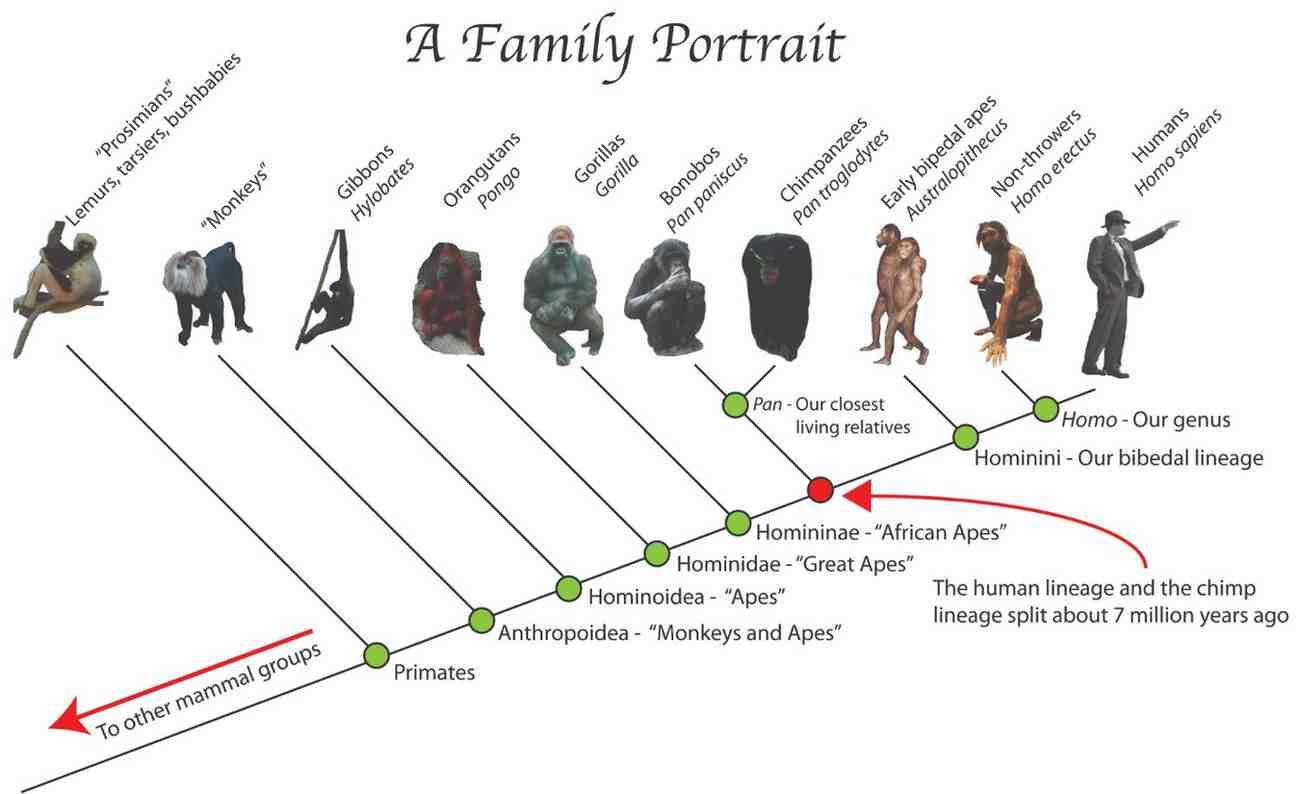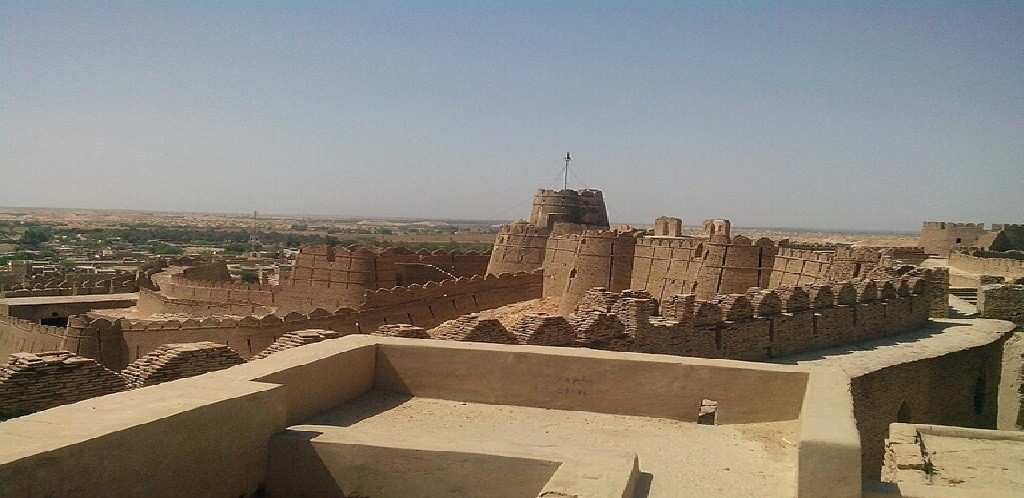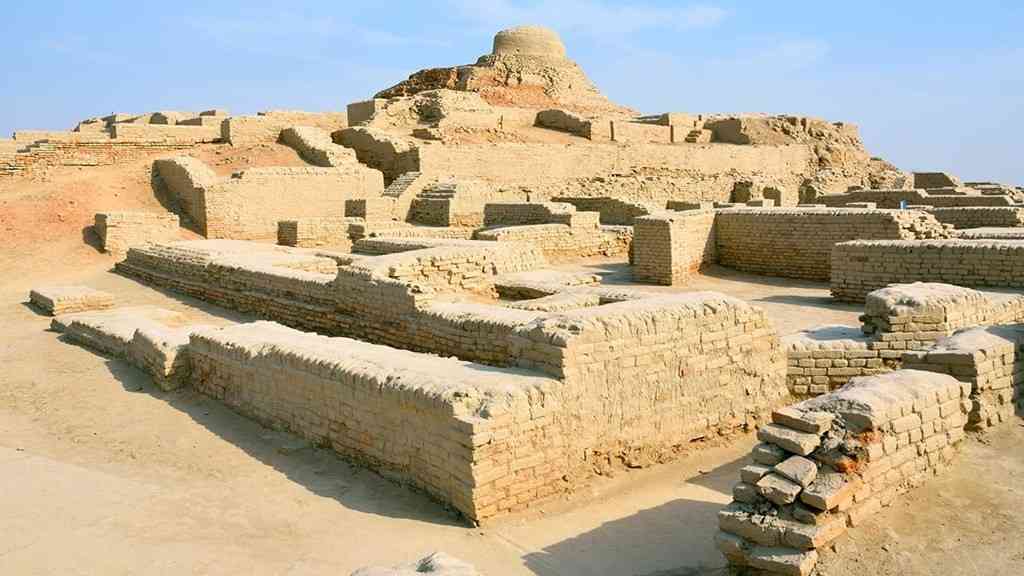Picture attributes to: https://knowledgeday2day.blogspot.com/2018/04/harappa-culture.html
Prehistoric Spirituality in the Indian Subcontinent
Mesolithic and Neolithic Periods
Archaeological findings from sites like the Bhimbetka rock shelters in central India provide some of the earliest evidence of spiritual expression in the region. These shelters, adorned with Mesolithic-era paintings, depict dances and rituals that suggest a form of animistic belief system, where natural elements and landscapes were imbued with spiritual significance. The inhabitants likely engaged in rituals aimed at appeasing or communicating with the spirits they believed resided in nature.
Burial Practices
Neolithic communities in the Indus River Valley exhibited burial practices that indicate beliefs in an afterlife and possibly ancestor worship. Graves often contained personal belongings, tools, and ornaments, suggesting a belief that these items would be useful in the afterlife. Such practices reflect a spiritual framework that honored the deceased and acknowledged a realm beyond the living world.
1. The Indus Valley Civilization (3300–1300 BCE)
The Indus Valley Civilization (IVC) is considered one of the world’s oldest urban societies, and its religious practices laid important foundations for later Indian religious traditions. While the exact details of the IVC’s religious beliefs are not fully known due to the absence of deciphered written texts, there are several critical religious artifacts and structures that offer insight.
Expanded Features:
- Sacred Seals and Symbols: The “Proto-Shiva” seal is the most famous artifact associated with early religious practices in the IVC. The figure on this seal, depicted in a seated posture with arms extended, is often seen as an early representation of Shiva or a precursor to him. The association with animals—such as tigers and elephants—suggests that the shamanistic connection to animals was a central aspect of their spirituality. The connection between gods and animals remains a theme in Hindu mythology, notably seen in Shiva’s vehicle Nandi (the bull) and Vahana (other deities’ animal vehicles).
- Sacred Spaces: The Great Bath found at Mohenjo-Daro is thought to have been used for purification rituals, an early form of ritualistic bathing that persists in many later religious practices, particularly in Hinduism, where bathing in the Ganges and other rivers is considered a purifying act. Similarly, water as a purifying agent and symbol of life is central in the rituals of Vedic and later Shakta traditions.
- Fertility and Female Deities: Numerous terracotta figurines, often of women with exaggerated sexual features, have been uncovered, suggesting the centrality of fertility rites. This is mirrored in the later worship of the mother goddess in Vedic and post-Vedic times. The figurines’ resemblance to the later worship of Shakti (the feminine energy in the universe) shows a continuation of the respect for feminine power in Indian religion.
Connection to Later Religion:
The IVC influenced Vedic practices particularly in its reverence for natural forces like water, fertility, and animals. The idea of a powerful, benevolent force present in nature—whether in Shiva, Shakti, or Agni—stems from the animistic and nature-focused rituals of this civilization. The role of ritual purification as an essential religious act also finds its roots in the IVC and evolves into the Vedic yajnas and even the modern Hindu practice of ritual bathing in sacred rivers.
2. Shamanic and Tribal Religions
Shamanistic practices across the Indian subcontinent predate the formalization of Vedic religion and represent a foundational aspect of early spiritual life in India. These tribal religions, closely connected to the natural environment, were prevalent in the forest regions and tribal settlements.
Expanded Features:
- Animism and Spirit Worship: The core belief of animism in these tribal religions was that all living and non-living things possessed a spirit. Forests, rivers, mountains, and even individual trees or rocks were considered divine. These beliefs were based on the concept that the universe was alive with spiritual energy. The Bodhi Tree, under which Buddha attained enlightenment, for example, is a direct continuation of the tree worship found in pre-Vedic tribal religions.
- Shamanic Healing and Trance: Shamans, as mediators between the physical and spiritual worlds, were central figures in these early tribal societies. They would enter altered states of consciousness (often induced by drums, chanting, or rituals) to heal the sick, predict the future, or communicate with the spirits of nature and ancestors. These practices are reflected in later Vedic rites where Brahmins and rishis (sages) performed rituals to channel spiritual power.
- Totemism and Ancestor Worship: Some tribes were known for totemistic practices, where each clan or family would adopt a particular animal or symbol as its sacred totem. Ancestor worship was another important practice, as people believed that the spirits of their ancestors could influence the present world. Rituals might involve offerings to the ancestors, dance, and sacrifices. The worship of the Nāga (serpent) gods, seen in both tribal and later Vedic traditions, is a clear example of this totemic and ancestor-based belief system.
Connection to Later Religion:
- Shamanistic practices are evident in later Hindu practices of yoga and meditation, especially the use of mantras, rhythmic chanting, and meditative postures that were likely inherited from early trance-like states used by shamans to achieve higher spiritual insight. The Nāga worship, which has survived into modern-day Hinduism (particularly in Kailasa and Kumbh Mela), is an important link between these early tribal beliefs and later religious practices.
- Additionally, the emphasis on rituals involving spiritual communication, purification, and protection are central to the Vedic sacrifices and later forms of Shakta worship, which maintains a similar reverence for spirits and natural forces.
3. Dravidian and Pre-Aryan Influences
The Dravidian culture, which flourished in southern India, is believed to have been present in India long before the Aryan migrations. The religious practices of the Dravidians had a significant influence on the Vedic religion and Hinduism, especially in the areas of goddess worship, fertility cults, and serpent symbolism.
Expanded Features:
- Mother Goddess and Fertility Cults: The Mother Goddess worship was a key aspect of early Dravidian religion, reflecting the importance of fertility, motherhood, and the earth. Temples dedicated to goddesses were widespread, and many Dravidian communities believed that the goddess would bless the community with fertility and abundance. This early worship of the Divine Feminine influenced later Hinduism, where Shakti (the goddess energy) became central.
- Serpent Worship: The Nāga (serpent) was not just a totem but a divine protector in Dravidian traditions. The serpent gods are said to dwell in the underworld and were revered as guardians of water, wealth, and fertility. In later Hinduism, Nāga worship became associated with Shiva and his consort, Parvati, and the most famous serpent deities were Vasuki (the king of serpents) and Ananta (the cosmic serpent).
- Sacred Geography: The Dravidians, like many pre-Vedic cultures, believed in the sacredness of geographical features, especially mountains, rivers, and forests. Many Dravidian religious practices were centered around sacred sites, and pilgrimages to these locations played a crucial role in religious life. In modern Hinduism, this idea has evolved into the practice of visiting holy shrines (like Kedarnath or Tiruvannamalai) and river worship (such as the reverence of the Ganges).
Connection to Later Religion:
- The worship of goddesses in Shakta traditions and the reverence for the serpent gods are direct continuations of Dravidian practices in Hinduism. The themes of fertility and protection associated with these deities are reflected in Shiva’s consort Parvati and in the temple rituals that venerate the goddess as the source of divine power.
4. Proto-Vedic Elements
Before the formalization of Vedic texts, there were already proto-Vedic elements that blended the Indo-Aryan beliefs with the indigenous religious traditions. These elements formed the base of what later became the Vedic religion.
Expanded Features:
- Sacrificial Rituals (Yajnas): Pre-Vedic sacrificial rituals, likely influenced by tribal and shamanic traditions, revolved around offering symbolic gifts to deities (such as fire, ghee, and grain) to ensure prosperity, protection, and the well-being of the community. The pre-Vedic focus on fire rituals eventually became codified in the Vedic yajnas, with greater elaboration on the specific types of offerings to deities like Agni (the fire god).
- Deities of Nature and Cosmic Order: Early forms of deities like Indra (god of storms) and Varuna (god of cosmic law) were already worshipped in localized forms, often as forces that governed the natural world. These gods would later become central figures in the Rigveda, where they are elevated from local to pan-Indian worship.
- Oral Tradition and Hymns: Early oral traditions involved chanting hymns or songs that celebrated natural forces and deities. This practice of oral transmission of spiritual knowledge would later evolve into the Vedic hymns and prayers, which were meticulously preserved and chanted by priests (Brahmins) over generations.
Connection to Later Religion:
- Vedic religion, especially the emphasis on sacrifice, hymns, and the worship of natural forces, is a continuation of the proto-Vedic elements. The Vedic yajnas (sacrificial offerings) to Agni, Indra, and other deities were built upon these earlier practices, forming the foundation for many subsequent Hindu rituals.
5. Vedic Transition and Aryan Influence
The migration of Indo-Aryans around 1500 BCE brought new religious and cultural ideas, which merged with the existing religious practices in India, marking the transition to Vedic religion.
Expanded Features:
- Arrival of Vedic Texts: The Vedas, composed in Sanskrit, were an intellectual and spiritual revolution. The Rigveda, Yajurveda, Samaveda, and Atharvaveda were the foundational texts, which codified rituals, philosophy, and sacrifice. These texts became the religious authority for the people, forming the basis of Vedic and later Hindu thought.
- Formalization of Rituals: The sacrifice of animals, the offering of grains, and the chanting of sacred verses became formalized in Vedic rituals. Brahmins took on the role of performing these rituals, and their priestly duties became central to the religious and social structure.
- Pantheon of Gods: Indra, Agni, and Soma were worshipped in elaborate rituals, and new gods like Vayu (god of the wind) and Saraswati (goddess of wisdom) emerged. These deities, many of whom were nature gods, represent the continuation of pre-Vedic traditions into a more formalized religious pantheon.
Connection to Later Religion:
The Vedic gods are still honored in modern Hinduism, and the basic rituals of yajna (sacrifice) continue today in temple worship and Hindu festivals like Puja.
6. Spiritual Practices and Concepts
Pre-Vedic spiritual practices laid the groundwork for key philosophical and ritualistic elements in Hinduism, including concepts like karma, moksha, and the three gunas (qualities of nature).
7. Rise of Hinduism from Vedic Religion
As Vedic traditions gave way to more diverse forms of religious worship, the synthesis of Vedic, Dravidian, and tribal beliefs gave rise to the eventual development of Hinduism as a formalized religious system.
These shifts brought about an increase in temple worship, the importance of personal devotion to deities like Vishnu, Shiva, and Devi, and the doctrine of rebirth, all of which are core tenets of modern Hinduism.
Conclusion
Pre-Vedic religion in India represents a diverse and complex spiritual landscape that gradually evolved over millennia. The beliefs and practices, such as nature worship, ritual purification, and ancestor veneration, laid the foundation for the rise of Vedic religion and Hinduism. The synthesis of pre-Vedic indigenous traditions with the Aryan influence created a unique spiritual system that continues to influence Indian religious practices today. Through the study of these ancient traditions, we gain insights into the deep, interconnected relationship between spirituality, nature, and society in the ancient world.





